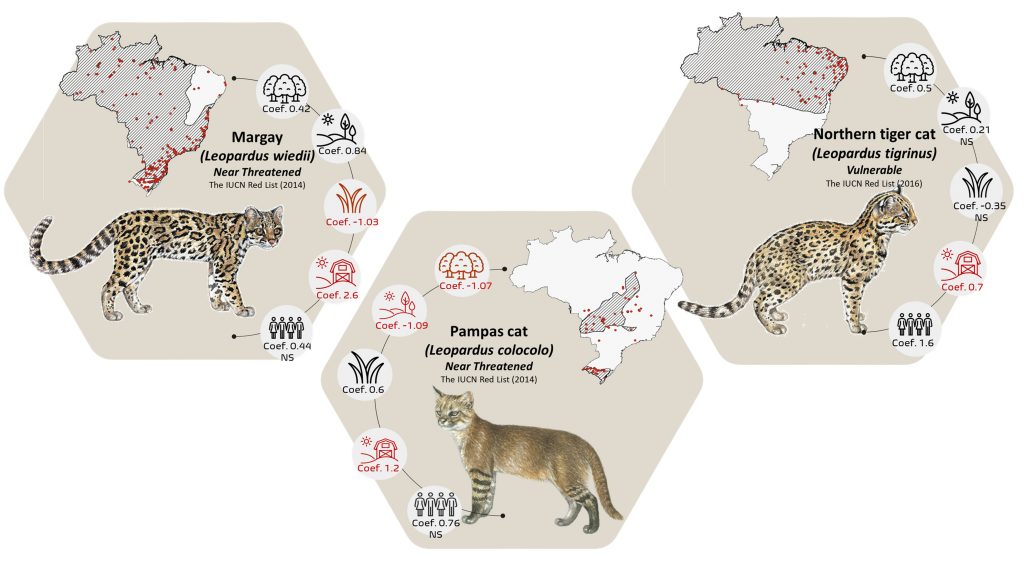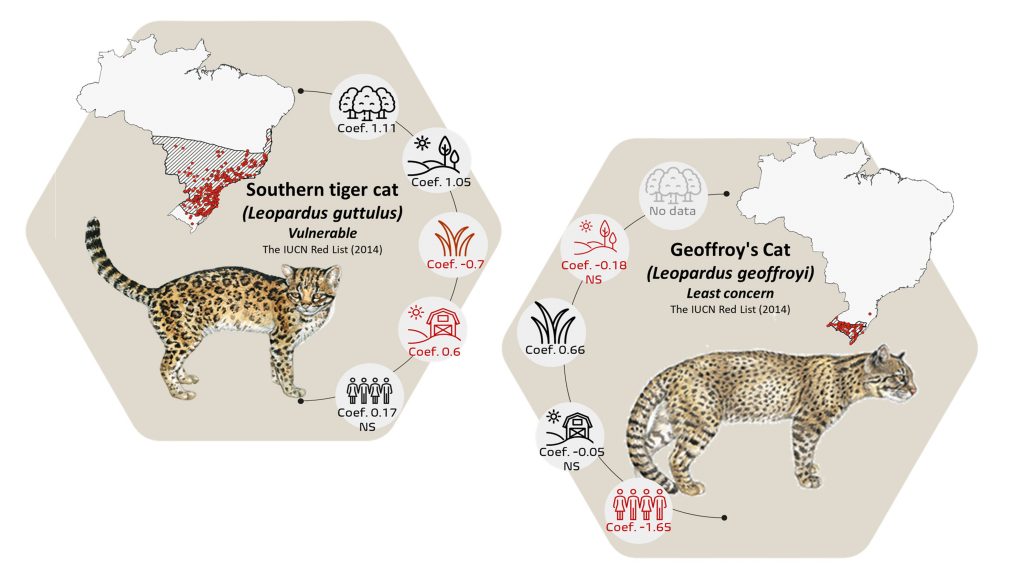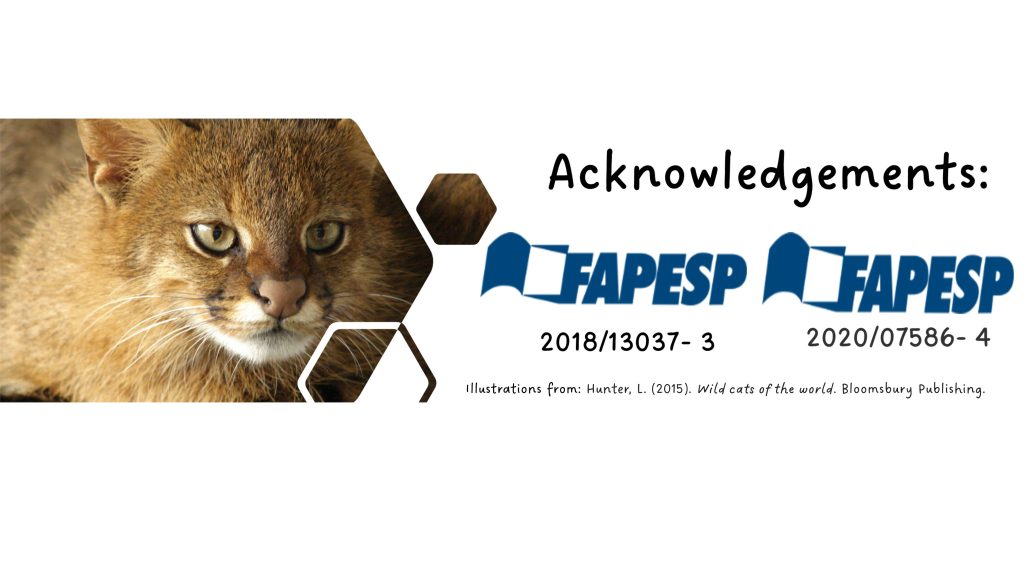Preliminary research highlights from my study on habitat selection among Brazil’s wild felids
Brazil is home to nine species of wild cats, eight of which are nationally threatened. While habitat loss due to agriculture and human expansion is recognized as their primary threat, little was known, until now, about how each species truly responds to these anthropogenic pressures. At this early stage of research, we aimed to determine whether these cats remain in their natural habitats or venture into human-modified areas. The answers surprised us.
What We Found:




Why It Matters
This study provides new insights into the interactions between Brazil’s wild cats and their environments. Each species shows unique responses to both natural and human-modified landscapes. Some cats, like the jaguarundi and margay, tolerate or even prefer areas near human activity. Others, such as the puma and ocelot, avoid those areas and favor natural habitats.
The analysis highlights key landscape features, grasslands, forest edges, and agricultural zones that influence where these cats live. These findings help guide future conservation strategies, especially in fragmented regions. For example, while jaguars are often linked to deep forests, this study found them using forest edges instead. This unexpected result may relate to prey availability or altered behaviors due to human pressures.
By modelling habitat selection across nine species, this work challenges assumptions and provides tools to identify priority areas for protection. It also shows the need for species-specific strategies. What works for a jaguar may not suit a pampas cat.
Final Thoughts
This blog summarizes early insights from a broader scientific project still in progress. My goal is to stimulate discussion and raise awareness about how each cat species adapts, or fails to adapt, to Brazil’s shifting landscapes.
If you work with conservation planning, spatial ecology, or wild felids, I invite you to connect. Your insights and collaboration can strengthen the outcomes of this work.
Do you have suggestions or similar experiences? Want to learn more? Reach out, this blog is updated as the project advances!


